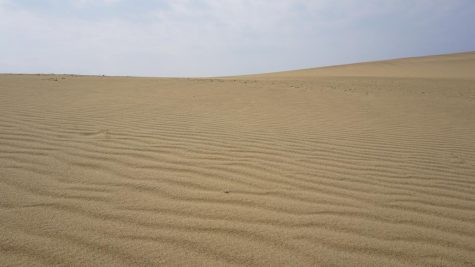A Grand Visualization of Frank Herbert’s 1965 Sci-fi classic Dune
September 1, 2021
Adapting Frank Herbert’s Dune for the screen might seem like an impossible task. The novel, which is nearly 200,000 words, is packed with futuristic technology, interstellar politics, multiple religions, and giant sand worms. Even the book itself can be difficult to understand without a sizable glossary handy. But Denis Villenueve’s ability to capture the enormous scope of Dune in his 2021 adaptation is the film’s greatest attribute. 
The story of Dune (Dune: Part One, as it is titled within the film) follows Paul Atreides (played by Timothee Chalamet), and the son of a powerful duke (played by Oscar Issac), who must fight for control of the desert planet Arrakis, soon after an imperial decree sends his family to the planet as custodians.
Arrakis is the universe’s only source of melange, a psychoactive spice that grants its user a prolonged lifespan and minor prescience. Of course, with so much money involved in the business of spice harvesting, other powerful people—namely House Harkonnen—want control of Arrakis as well.
Visually, Dune: Part One is stunning. The expansive deserts of Arrakis and the tall cliff sides of Paul’s home world Caladan immerse the viewer into the settings. The alien fashion, buildings, vehicles, and weapons bring the creativity of Herbert’s world alive. Even some of the more silly elements, such as the giant worms who swim in sand, are both terrifying and beautiful with their perfectly circular mouths lined with knife-like teeth. Pair this with a score from Hans Zimmer and it’s bound to be epic.
The ultra-detailed and impressive CGI also means that the dialogue is less stuffed with world building that has already been visualized. While the novel has the major benefit of being able to explain people or conflicts or technology through an outside narrator, Dune: Part One is still able to keep the exposition dialogue to a minimum. There are a few moments when the film deviates from the novel for the sake of explaining something to the viewer, but overall it is a faithful adaptation.
Another factor contributing to the success of the adaptation is the performances given by the cast. Timothee Chalamet’s knack for teenage melodrama makes him the perfect choice for Paul, and the dynamic between him and Rebecca Ferguson (who plays his mother Jessica), perfectly matches that of the book. Stellan Skarsgård who portrays Baron Valdimir Harkonnen, the main antagonist, brings a presence that is genuinely horrifying. No one is far off the mark with their character and the all-star cast doesn’t get in the way of each other.

Part of the reason Dune: Part One is able to accurately demonstrate the scale of Dune’s story is that it only depicts half of the novel. As you may have gathered from the title, director Denis Villenueve made the choice to split the story in two. Overall, this decision is a positive one, as it lets Dune: Part One build the world without being restricted by time, and it saves the viewer from a five-hour ordeal.
But of course, no narrative can come out unscathed when it’s been chopped in half, no matter how good the dressing is. The ending of Dune: Part One is very abrupt. After the rush of action over the 155-minute runtime, there is little closure or falling action, and far too many questions are left unanswered. It feels like a set-up and a teaser for what’s to come next rather than a story that can stand on its own.
Those who have read the novel will recognize the ending of the film as a fairly apt place to stop. But if you have no desire to read the original before going to see the movie, it’s important to remember that a second part is needed to complete the story.
Fans of the franchise will be happy to know that Part Two is set to be released on October 20, 2023, as reported by Variety.
A fan of the novel or not, Dune: Part One is worth a trip to the movie theater because, just like the book, it is best experienced in the grandest way possible.
Rating: 4/5



















